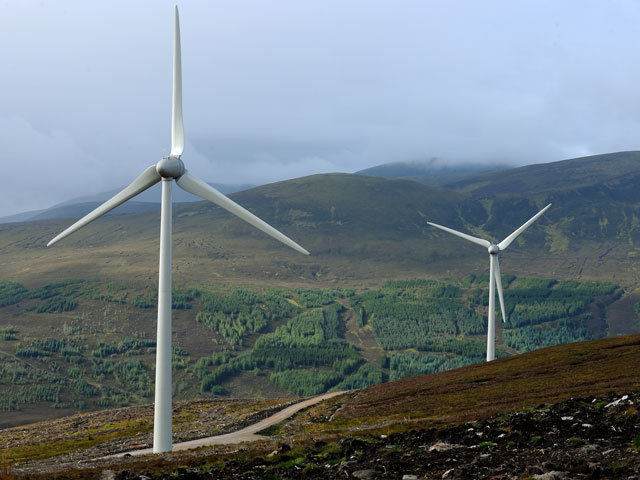
It is now “almost impossible” to find a mountain from which a windfarm cannot be seen, according to a senior mountaineering figure.
David Gibson, chief executive of Mountaineering Scotland, revealed his fears about the “onslaught” of onshore wind developments on the world-famous landscape of the Highlands.
He said the representative body was supportive of renewable energy – but said forms of development are needed which protect the mountain landscape.
Mr Gibson said: “Our members’ primary interest is in mountains and it is almost impossible now to find a mountain from which a wind farm cannot be seen.
“Protection exists in planning policy for national parks and national scenic areas, but not for mountain areas outside, which are of passionate interest to our members and others who seek adventure, and the health and wellbeing benefits such venues provide.
“The pressure on the mountains is increasing – and arguably so is the adverse impact on tourism.”
Mr Gibson highlighted the example of the Creag Riabhach windfarm, which was the first development given permission by the Scottish Government which breached the boundary of the national wild land map.
Mr Gibson said: “Creag Riabhach is unwelcome – not just because of its impact on Sutherland’s fantastic landscape, which will be diminished substantially if the development goes ahead – but also as a ministerial decision taken without reference to a democratic appeal or inquiry.
“Importantly, the decision lowered the protective bar for wild land and was taken against the advice of the government’s own advisors Scottish Natural Heritage.
“We call on the minister to honour the pledge to ‘afford significant protection’ to wild land areas, before our wonderful open landscapes are scarred forever. He should reject such future developments.”
A Scottish Government spokeswoman said: “We have clear planning policies in place to ensure windfarms are developed in appropriate locations, and applications are refused when they do not meet strict criteria. Whilst we need to pursue Scotland’s vast potential to generate power from renewable sources, it is equally clear that we need to do this in a way that protects Scotland’s magnificent natural environment.
“Scottish planning policy makes clear windfarms are not appropriate in national parks or national scenic areas – which cover a fifth of Scotland – and also strengthens protection for wild land areas.
“That will always be the basis of our renewable energy policies and we will go on striking that balance, working with partners across the energy, environment and tourism sectors and ensure that they all thrive.”
Recommended for you
